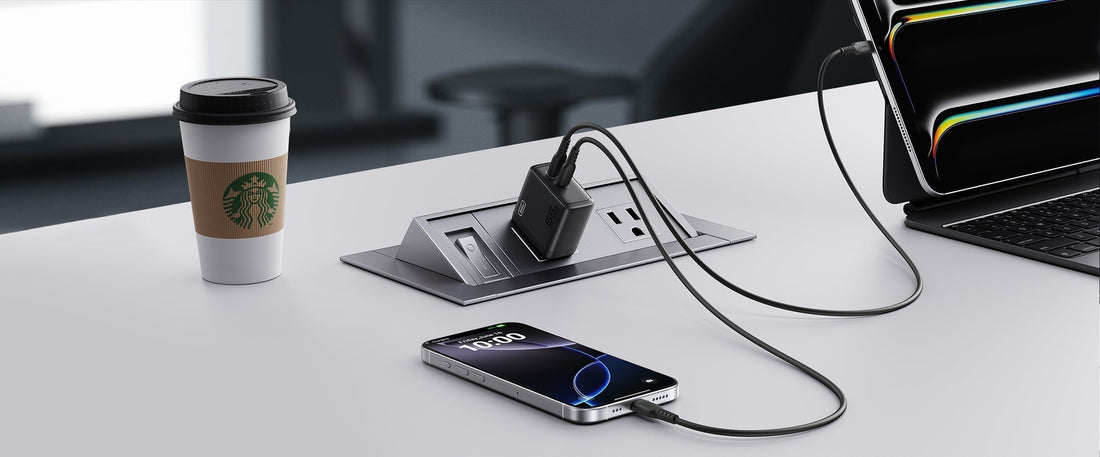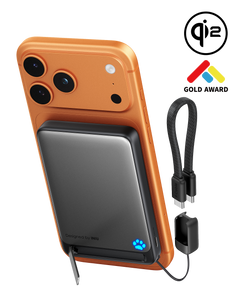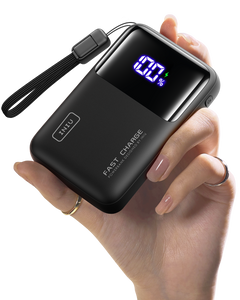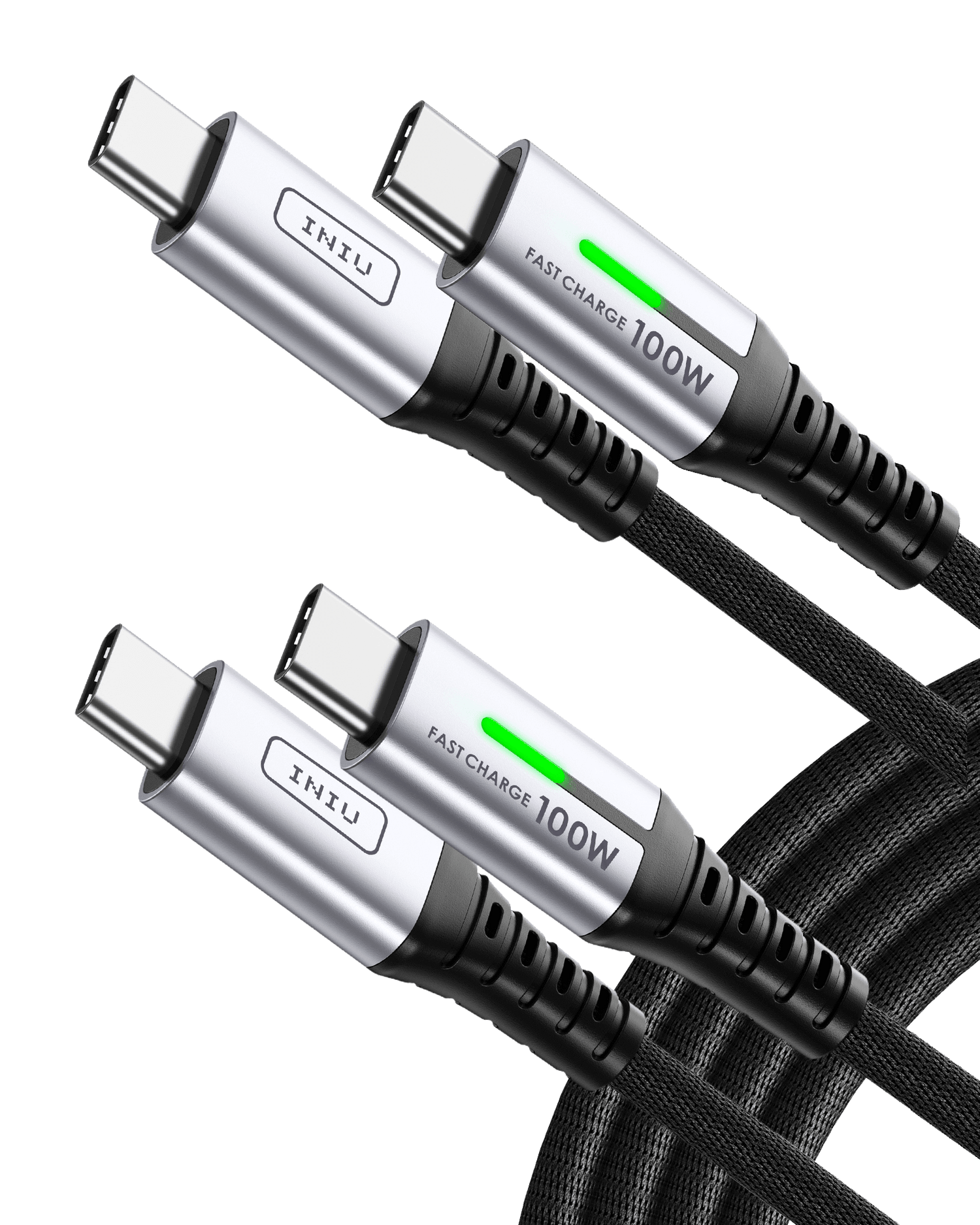
How to Extend iPhone Battery Life: Expert Tips and Charging Solutions
Few things frustrate iPhone users more than watching the battery drain quickly or noticing performance slowdowns after just a year of use. The culprit in many cases is battery wear. Apple's iPhones use lithium-ion batteries, which naturally degrade over time, but the way you charge and care for your device plays a big role in how long it lasts.
Maintaining iPhone battery health is not just about convenience—it also impacts device speed, resale value, and whether your iPhone can hold up through the day without a charger. In this article, we'll cover professional, practical tips to help extend your iPhone's battery lifespan, how to check its current health, and which charging solutions can keep your device safe and powered wherever you go.
How to Check iPhone Battery Health?
Before improving your charging habits, you need to know the current condition of your battery. Luckily, Apple makes this simple. Let’s see how to easily check battery health on iPhone:
- Open Settings
- Tap Battery
- Select Battery Health & Charging
Here, you'll see two important numbers:
Maximum Capacity – This percentage tells you how much charge your battery can hold compared to when it was brand new. Anything above 90% is healthy; below 80% means it may need service soon.
Peak Performance Capability – This indicates whether your iPhone can still deliver normal performance or if the system is throttling power to avoid unexpected shutdowns.
Many users ask: "What percentage is considered bad for iPhone battery health?" – Apple recommends considering a replacement when it drops below 80%.
If your phone still drains quickly even with 85%+ capacity, the issue might not be the battery itself but charging habits and accessories. That's where optimized charging solutions, like a magnetic iPhone charger or portable power bank, make a difference.
Is It Bad to Charge an iPhone Overnight?

One of the most common user concerns is whether leaving the phone plugged in all night harms the battery. Modern iPhones are smart enough to manage overnight charging with the Optimized Battery Charging feature. This pauses charging around 80% and finishes right before you usually wake up.
However, heat is still a risk factor. Using poor-quality chargers or keeping your phone under a pillow while charging can cause temperature spikes that accelerate battery wear.
Pro Tip: For iPhone 12-17 users, consider using a magnetic iPhone charger. It not only ensures secure alignment but also reduces cable strain. Additionally, the new Qi2 and Qi2.2 wireless charging technologies maintain efficient contact and reduce overheating.
Should You Let iPhone Battery Drain Completely?
No. Unlike older nickel-based batteries, lithium-ion batteries in iPhones don't benefit from full discharge cycles. In fact, letting your battery hit 0% too often stresses the cells.
Apple's engineers recommend keeping your iPhone between 20% and 80% most of the time. That's the "sweet spot" where lithium-ion batteries age more slowly.
Users often ask: "Is it better to keep your iPhone plugged in all the time?" The answer is also no—constant high-voltage charging keeps the battery under stress. Instead, short top-ups throughout the day are healthier.
Why Does iPhone Battery Drain Faster in Summer?
Heat is one of the biggest enemies of iPhone battery health. If you've noticed your phone dying faster during the summer or when left in a hot car, it's not your imagination—high temperatures speed up chemical aging inside the battery.
Practical tips to avoid heat damage:
- Don't leave your iPhone in direct sunlight or a hot car.
- Remove thick cases during fast charging to improve heat dissipation.
- Avoid gaming or video streaming while charging.
- Cold weather can also cause your iPhone to temporarily shut down, but once it warms back up, battery performance returns.
What's the Best Charger for iPhone?

With the new iPhone lineup, fast charging isn't just a luxury—it's a necessity. But here's the catch: not all chargers are created equal. Many cheap, uncertified chargers can cause overheating, painfully slow charging, or even long-term battery damage. Choosing the right charger not only protects your device but also helps maintain iPhone battery health over time.
When shopping for the best portable chargers for iPhone 16 or other series, keep these key factors in mind:
Power Delivery (PD) Support – Look for at least 20W PD output for true fast charging. This ensures your iPhone 16 can go from 0–50% in about 30 minutes.
Capacity – A 10,000mAh portable charger is perfect for daily use and emergency top-ups, while a 20,000mAh model is better for travel, long flights, or multi-day trips.
Safety Certification – Safety (CE, UL, FCC, etc.) certification guarantees safe compatibility, stable charging speeds, and long-term battery protection.
Design & Convenience – Consider whether you prefer a wired PD charger, a magnetic iPhone charger for easy snap-on charging, or a portable wireless charger for iPhone when you want to ditch cables altogether. The portable and unique design will make your charging experience better.
Our expert pick: A 10,000mAh wireless portable charger with 15W Qi2 fast wireless output, compact enough to pass TSA approval for flights, yet powerful enough to fully recharge an iPhone up to 2-3 times. Pair it with a GaN charger for quick recharging, and you'll have the most versatile setup for work, travel, and everyday use.
Do Portable Wireless Chargers Damage iPhone Batteries?
Wireless charging has grown popular thanks to MagSafe and Qi2 wireless charging technology. But a common concern is whether wireless charging reduces battery health.
The truth: Wireless charging does generate slightly more heat than wired charging, which can affect long-term health if you use low-quality products. However, premium Qi2 portable wireless chargers for iPhone are designed to manage heat and optimize charging speed safely.
When choosing a wireless solution:
- Look for MagSafe or Qi2/2.2 compatibility for strong alignment.
- Use fast wireless chargers for efficient power delivery.
- Avoid no-name chargers that overheat easily.
For travel or daily commutes, a slim magnetic wireless power bank ensures you never run out of power and free you from carrying cables, while still protecting your battery health.
When Should You Replace Your iPhone Battery?
Even with perfect habits, batteries eventually wear out. Signs you may need a replacement include:
- Maximum Capacity under 80%
- Unexpected shutdowns
- Overheating during light use
- Draining too quickly despite optimized charging
Apple offers in-store battery replacements, which restore performance. But many users can extend battery life by adopting better charging practices and accessories long before reaching the replacement stage. Try to maintain good charging habits to postpone the time when you need to replace the battery.
Keep Your iPhone Battery Healthy for Years
Your iPhone is more than just a device—it's your camera, wallet, and daily work tool. Protecting iPhone battery health ensures it performs reliably for years.
- Check your battery health regularly in Settings.
- Charge smart: avoid 0% or 100% extremes, stay in the 20–80% range.
- Keep your phone cool during charging.
- Choose certified, high-quality charging accessories.
With the right routine and accessories, you'll get the most out of your device and keep battery anxiety at bay.
FAQs
Why does my iPhone battery drain so fast even when I'm not using it?
Background activities such as app refresh, location services, and push notifications can accelerate battery drain. Disabling unnecessary features and keeping iOS updated can help. Pairing your iPhone with a high-quality portable charger ensures that you always have backup power when unexpected drains occur.
Does using fast charging shorten iPhone battery lifespan?
No—Apple designed iPhones to safely handle PD fast charging. What harms the battery is excess heat from uncertified or low-quality chargers. A reliable 20W+ PD charger or Qi2/2.2 magnetic iPhone charger will safely provide fast charging without hurting long-term battery health.
Is wireless charging worse for battery health than wired charging?
Wireless charging generates more heat, which can affect battery wear if the charger is poorly made. However, premium portable wireless chargers for iPhone are designed with temperature management to minimize this risk. If you value convenience, a Qi2-compatible charger is safe for daily use.
How many times can a 20,000mAh power bank charge an iPhone 16?
On average, about 3–4 full charges, depending on the model (iPhone 16, Pro, or Plus). This makes a 20,000mAh portable charger ideal for travel or long weekends without access to outlets.
What's the safest percentage range to keep my iPhone battery?
The sweet spot is between 20% and 80%. Avoid letting your phone hit 0% too often, and don't keep it at 100% for prolonged periods. This habit, paired with a reliable portable charger, helps maintain iPhone battery health longer.





